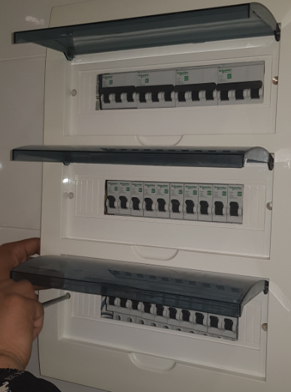Submit a request
Our manager will contact you



Upgrading the existing power supply system of a house with a UPS installed for priority consumers
Feb 13, 2022
This project was implemented in three stages. At the first stage, we conducted an inspection of the existing power supply system. At the second stage, we made a list of the minimum quantities of equipment to improve fire safety, electrical safety, and components to protect expensive household appliances from surges, voltage slumps, etc. At this stage, we selected the necessary uninterruptible power supply (UPS), the required UPS run time in the event of voltage loss in the mains and priority loads; At the third stage, we implemented the project. Please see a step-by-step implementation of the project below.
The results of the inspection of the power supply system of the house
The house meter board (MB) (Photo 1):

Photo 1. The house meter board (MB)
Self-supporting insulated wire (SIW) brought in from the support to the house (Photo 2):

Photo 2. Input from the support into the house
Distribution boards inside the house (Photo 3):


Photo 3. Input from the support into the house
General comments and customer’s wishes:
Solution
We have selected the optimal solution to address the identified issues, with due regard to the financial capacities of the customer:
MB diagram

For AQTech website
Submit a request
Our manager will contact you

